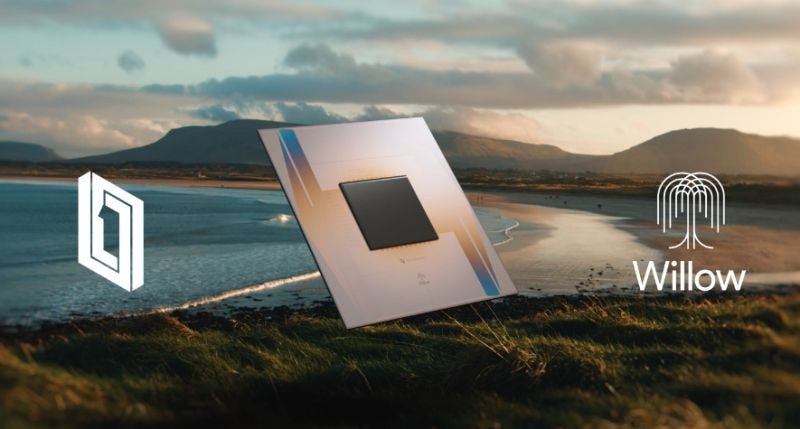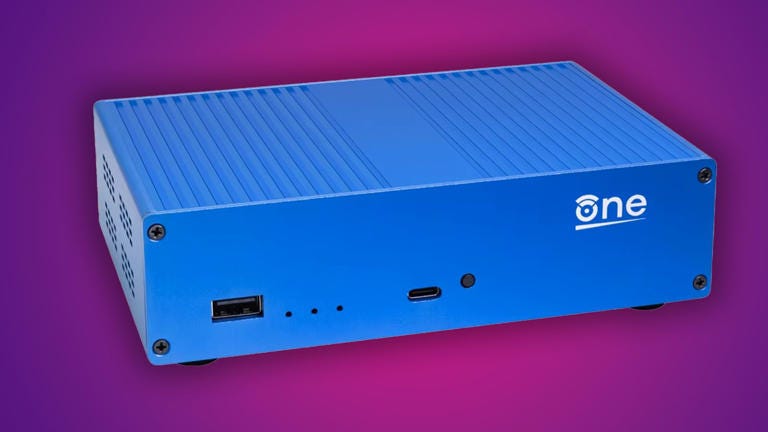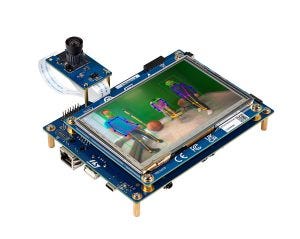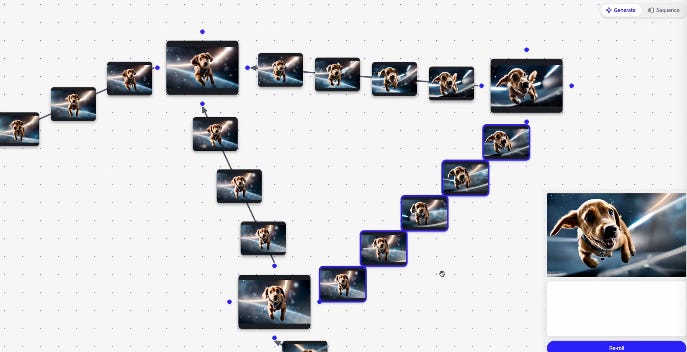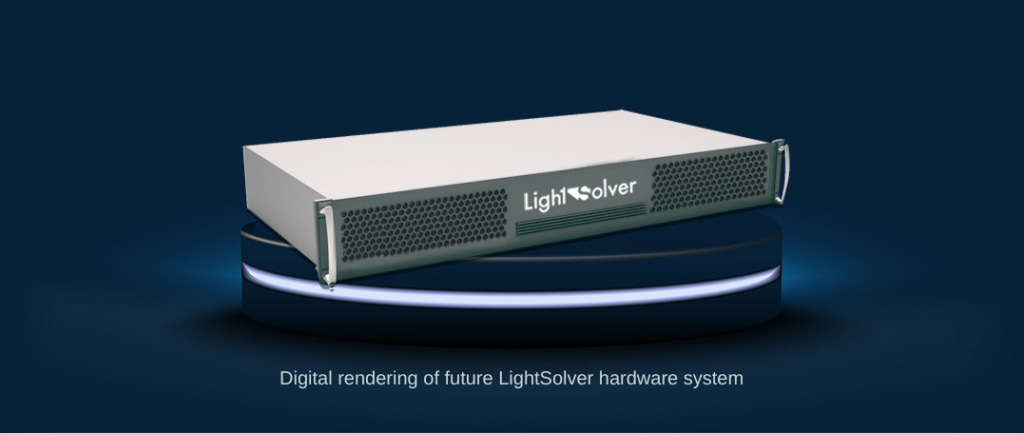Android XR Headsets, Pure Light Computation, Advancements in Quantum & AI Chips, 3.5D package, OpenSource HW, GenAI Video Storyboard goes Graphical, Universal EV Charging Protocol & more...
Bi-Weekly Snaps to Inspire Innovation in You - 0015H

Innovative Product Snaps. . .
«Following, not necessarily new launches, intrigued me with their innovative features.»
Google joins hands with Samsung to launch Android based XR Headset to challenge Apple, Meta & others. The headset will be launched next year. The platform is built on the foundations of Android to promote spatialized versions of apps that take advantage of virtual spaces. Initial reports suggest the compute power is from Qualcomm. Considering the android ecosystem, XR space will be very different in couple of years.
Xreal’s AR glass is claimed to beat Apple’s Vision Pro using in-house X1-spatial chip. Xreal announced One Series AR glasses, which is claimed to have smoother playback with 3ms Motion to Photon (M2P) latency compared to 12ms M2P of Apple. Apart from enhancing motion blur, the One Series features two 1080p displays, giving you a full 32:9 aspect ratio for viewing content. Compared to last years version, the new one gets ~21% greater viewing area. With lots of customisation options, Xreal plans to get more traction with this glasses.
Intel launches its much awaited BattleMage ARC GPU. The Battlemage lineup debuts with the BMG-G21 SoC, which is targeted at mainstream gamers and eyes the 1440p/1080p segment. The top end, Arc B580 can go up to 20 Xe2 cores packed in 5 render slices with 20 RT units, 160 XMX AI Engines, and a clock speed of up to 2670 MHz. The card includes 12 GB of GDDR6 memory running across a 192-bit interface & offers a bandwidth of up to 456 GB/s.
Google‘s Quantum Chip, Willow, does a task in 5 mins, which a conventional Super Computer will take Septillion years (10 followed by 25 zeros). Google was able to achieve this using drastic reduction in quantum error and exceptional system engineering which enhanced all aspects of their process, from chip architecture, fabrication to Quantum gate development & calibration.
OpenWrt One - the forever unbrickableWi-Fi 6 box gets FCC with the software right to repair and copyleft compliance. This is a first jointly developed hardware from Open source Wi-Fi router project OpenWrt and the Software Freedom Conservancy. Built on Banana Pi, with a pair of Ethernet ports, 1Gbit and 2.5Gbit, the latter allowing power-over-Ethernet along with 3 USB ports including USB-C & dual band WiF-6.
SemiQon announced fully optimized Cryogenic CMOS transistor. This transistor is claimed to operate effectively at ultra low temperature around 1kelvin (apprx -272 deg C). This transistor consumes 0.1% of the power combined with 1000x reduced heat dissipation than their traditional counterparts, is a great innovation which will revolutionise Quantum Computing, Space, HPC & AI industry.
STMicro launches STM32N6, with inbuilt AI accelerator, a NPU capable of 600 GOPS, enabling machine learning to be run on an MCU for edge applications. It also has their first Cortex-M55 MCU and one of the few in the industry to run at 800 MHz. It has the latest embedded RAM on STM32 and the first one to include NeoCrhom GPU + H.264 HW encoder. Simply put, STMicro had gone ballistic.
Runway’s Graph - A prototype tool which will make video generation using AI with the flow of your thoughts. Imaginge the storyboard for your next video is represented in images in a graphical spatial domain and you have complete freedom to organize their nodes and edges. You will immediately realize that your random thoughts can be mapped to the video now. GenAI features make this even better as you can just command "make this video match the style of these images” and the tool will do it. To be cautious its a proto only, but the innovation is great.
Innovative Trend/News Snaps. . .
«Following announcements / news caught my attention.»
TSMC wants to bring Ultra High performing AI processors close to the size of human palm, with 12 layers of HBM4 stacks reaching 9 reticle size by 2027. Reports suggest that TSMC expects its customers to place 1.6nm class die on top of 2nm die. This will bring significant boost not just to transistor count but also to overall performance of these chipsets.
Amazon bets on AI scaling, by teaming up with Anthropic to build massive Rainier AI Compute Cluster. The cluster will host hundreds of thousands of powerful AI chips designed to train the next generation of models spread across multiple locations, which is made possible with their innovation on Elastic Fabric Adapter. With Trainium2 & Trainium 3, Amazons will make its own chips a dominant player in this Rainier compute.
Broadcom announced industry first 3.5D F2F packaging technology for AI XPU’s. When the world is still undergoing transition for 2.5 & 3D packaging techniques, this indeed was an interesting announcement. Broadcom claims this innovation will improve AI processing performance and significantly reduce power for the chips.
AMD, Intel & even NVIDIA joined hands to invest in Ayar Labs, showing the future lies in photonics. The company’s valuation soared to $1B, with its light-based data transmission tech claimed to overcome server system bottlenecks due to heavy AI demand. Employing photons(light based) helps with great advantage on power consumption, heat generation, and data transfer speed over electrons.
Perplexity wants to bring AI hardware which can “reliably answer” to your voice based questions. Perplexity CEO posted on X stating that he wants to bring a $50 device which can help the AI search engine to take up physical form. The performance, especially latency, will be the key decider here. One another question that normally comes is why it can’t be an app in the mobile phone itself.
Universal protocol for EV charging is coming in 2025. The partnership between SAE international, automotive consortium, EV charging operators & US Govt wants to bring relief to EV car users marred with problems with differences in charging station. By early 2025, the group wants you to just plug in, and everything including payment streamlined. Will be a great way to boost adoption.
Diamond Battery with 5000 years of life span is developed by UK researchers. The battery based on Carbon-14 diamond battery, which uses radioactive decay to generate low power levels. This will greatly help in applications where recharging or replacing batteries is very tough- for example implants like pacemakers & space applications.
Innovative Company Snaps. . .
« A Company, which I found intriguing owing to their product/ market/other innovation »
LightSolver - Developer of first pure LASER based Light Processing Unit (LPU) targeting Quantum & Super Computing
Based in TelAviv, Israel, LightSolver, was found in 2020 by Dr. Ruti Ben Shlomi and Dr. Chene Tradonsky from the Weizmann Institute.
With Quantum inspired technology, the company has developed a computation process, with only light (LASERS) and NO electricity
The company claims that their technology enables the simultaneous scanning of all possible solutions, mimicking the power of quantum computing and providing solutions to problems that are beyond the capabilities of classical and quantum computers.
Currently the company targets to execute complex mathematical operations, which will help intensive compute applications such as computer-assisted engineering (CAE), bio-science computations, and intractable optimization problems.
LightSolver had innovated their platform to run at room temperature and at reduced power consumption.
Their platform can be obtained for on-premise use. They also offer cloud as a service for those who prefer to access their platform in that mode.
Another easy to understand problem which is tackled by LightSolver is the optimisation problem. Its very evident that fields such as logistics, finance, and energy can get impacted with their technology. The company claims, optimization problems can be solved at the speed of light, orders of magnitude faster than other techniques.
Computation purely with light, not involving electricity, in itself was a great innovation aspect to keep a tab on this company.
Innovation Methodology Snaps. . .
«Methodologies, often from existing inventions, to develop innovation mindset»
Television - How a 14 year old farmer changed the world, after a visit to his farm attic
Philo Farnsworth, was a 14 year old in Idaho, United States when he conceived the idea of television. Though his family was traditionally into farming, he was inspired by the lone inventors like Edison, Graham Bell in his time and always wanted to go in the inventor path.
His desire to walk in the path of inventors was materialised when he accidentally discovered collection of books & magazines on scientific advancements at his farm attic.
He read about the radio invention, which succeeded in transmitting sound effectively. He also read that many inventors are trying, but not yet succeeding the same feat of wirelessly transmitting video.
Farnsworth had something what the other inventors did NOT have… His two horse team & the task to plough the field. After seeing the ploughed field, he imagined how patterns can be created with parallel lines. If the lines are created fast enough so that humans perceive it as an image instead of lines was the spark that enabled the current TV
Again, Farnsworth had gone to his books he found in the attic to get more insights. He soon learnt that this can be achieved only by electrons. He roughly sketched his idea of an electronic camera, and explained how an image can be converted into electrical signal, then transmitted and finally reconstructed line by line (like ploughed field lines). - The rest is history.
The age at which Farnsworth explained this to his teacher was 14.
Though Scottish inventor John Logie Baird, envisaged a complete television system, it falls more on the Mechanical Television category & its not practical for market scaling.
Farnsworth’s demonstration on September 3, 1928, is widely regarded as the first electronic television demonstration that has changed the world
Everyone knows that by 1930’s there are multiple persons including financially well funded labs with lots of resources and scientist trying to achieve this golden opportunity.
Regardless, the idea originated from a 14 yr old boy during ploughing his field and was able to envision with the resources he got. This fascinating less known story of electronic television, shows how age, occupation or resource availability doesn’t matter for bringing a world changing invention.
Fun Fact : Television is called as Idiot Box. The reason may be because its just an non responsive device that just shows what is transmitted or the persons addicted to TV’s tend to be going towards the “idiot” scale. Since its being used from 1950’s the exact reason isn’t clear & I let the readers to decide…
Final Note. . .
Thanks a lot for reading Innovation Snaps.
Please share your comments & this newsletter if you enjoyed it. Though tried my best to avoid mistakes, please remit for any typos/mistakes.





